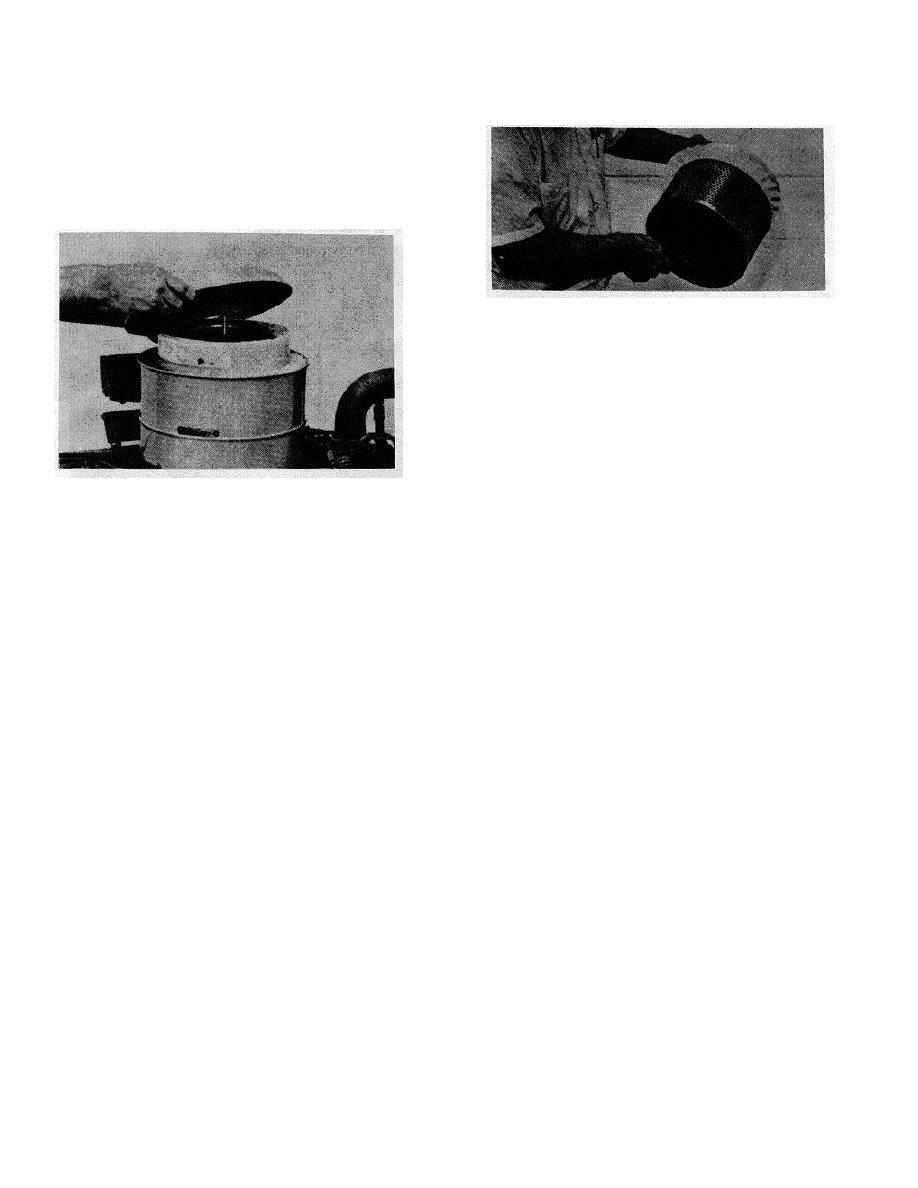 |
|||
|
|
|||
|
Page Title:
AIR INDUCTION AND EXHAUST SYSTEM |
|
||
| ||||||||||
|
|
 AIR INDUCTION AND EXHAUST SYSTEM
AIR CLEANER
1.
Remove the wing nut, cover and element.
2.
Clean the inside of the cover. The base
should be clean. If the base is dusty, the air
cleaner gasket leaked; discard the element.
3.
Inspect the new element for damage and dirt.
CLEANING THE ELEMENT WITH PRESSURE AIR
CLEANING WITH WATER
1.
Use clean water - 40 PSI maximum. Do not
use a nozzle.
2.
Direct the water stream along the complete
length of each pleat on the CLEAN side of the
element.
3.
Direct water along the complete length of
each pleat on the DIRTY side of the element.
REMOVING THE ELEMENT
4.
Rinse the CLEAN side of the element.
5.
Allow the cleaned element to dry thoroughly.
4.
Install the new element and cover.
CLEANING WITH DETERGENT
The element removed may be cleaned or discarded,
depending upon the apparent condition of the pleats. If
1.
Wash both sides of the element in a solution
a cleaned element is installed, and the exhaust smoke
of warm water and non-sudsing household
and/or loss of power continues, remove and discard that
detergent.
element and install a new element. Install a new
2.
Rinse the CLEANEST side of the element
element at least once a year.
with clean water (40 PSI maximum) along the
complete length of each pleat.
CLEANING WITH PRESSURE AIR
3.
Rinse the opposite side of the element along
the complete length of each pleat.
1.
Use clean, dry air - 30 PSI maximum. Hold
4.
Rinse the first side again to remove all
the nozzle at least one inch from the element
loosened dirt.
and at a slight angle. (A direct blast can rip
5.
Allow the cleaned element to dry thoroughly.
the pleating.)
2.
Direct the air stream along the complete
CHECKING CLEANED ELEMENT
length of each pleat on the CLEANEST side
of the element. (This will loosen the dirt from
Hold the dried element in front of a lighted electric
the dirtier side.)
bulb. Carefully inspect the element for tiny, pin-points
3.
Blow the loosened dirt from the DIRTY side.
of light. Any light showing indicates a pleat has ruptured
4.
Direct the air from the CLEAN side through to
and will tear with further use. Discard the element.
the DIRTY side to remove any dirt blown into
the pleats.
1.
Wrap usable elements in heavy paper.
2.
Store the wrapped element in a dry, clean
place.
VALVE LASH
PREPARING TO CHECK ADJUSTMENT
and No. 1 and No. 2 exhaust and inlet valves are
TDC of the No. 1 piston on the compression stroke is
the reference point. The No. 1 piston is at TDC
closed. (The rocker arms are free and the push rod is at
compression stroke when the timing mark on the
its lowest point.)
damper or the pulley is aligned with the timing pointer,
12
|
|
Privacy Statement - Press Release - Copyright Information. - Contact Us |